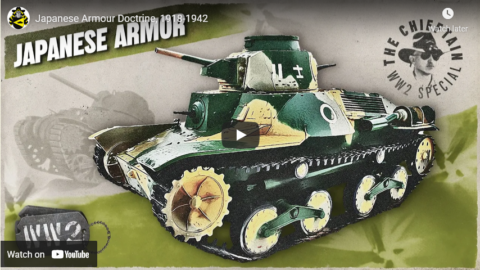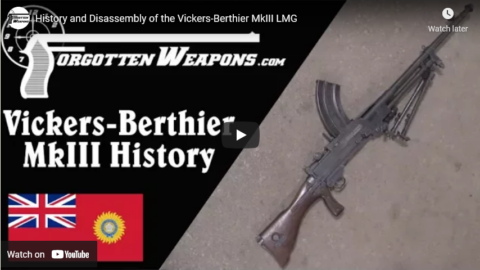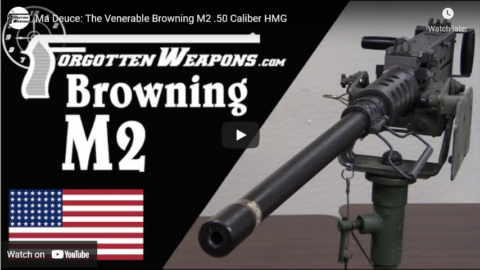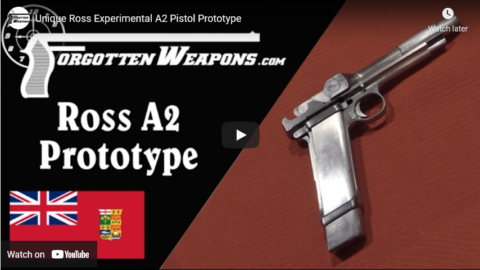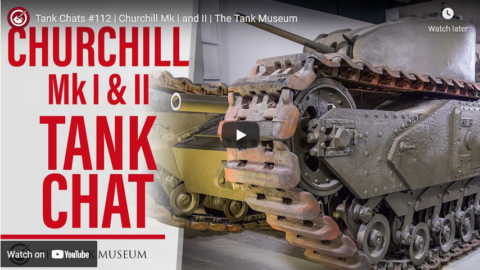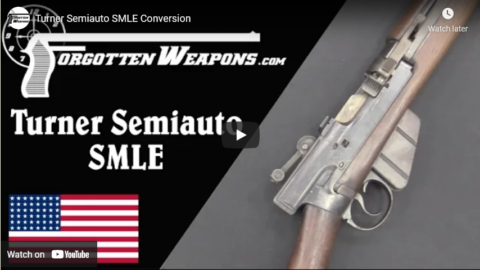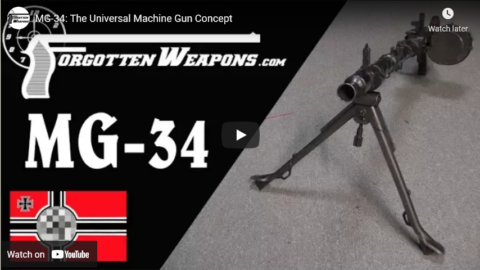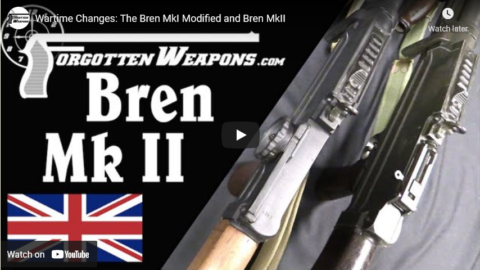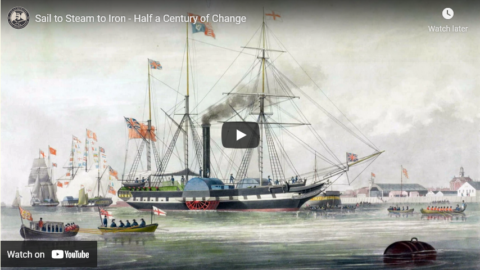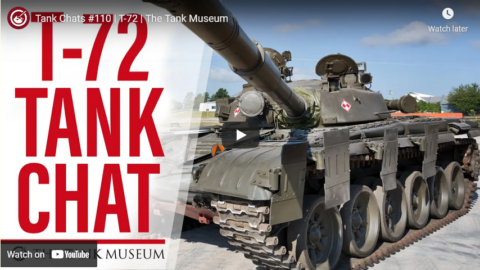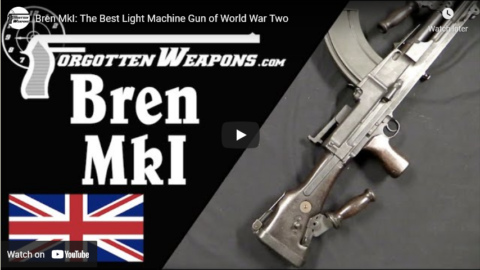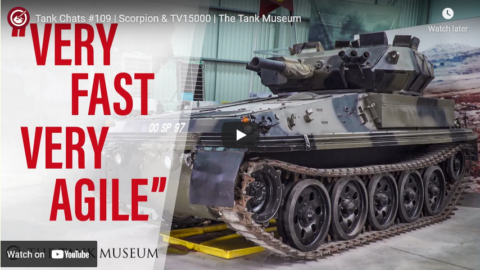The_Chieftain
Published 11 Jul 2021Sources include:
Japanese tanks and armoured Warfare 1932-45, David McCormack
WW2 Japanese Tank Tactics, Gordon Rottmen, Akira Takizawa
Japanese Tanks, Tactics and anti-tank weapons, Donald McLean
Type 89 and Tankette books, Kazunori YoshikawaContinuing on this series of videos supporting the WW2 Channel, I look at what I can find about how the Japanese thought of tanks and their usage, tempered by quite a bit of combat experience.
Improved-Computer-And-Scout Car Fund:
Patreon: https://www.patreon.com/The_Chieftain
Direct Paypal https://paypal.me/thechieftainshat
July 13, 2021
Japanese Armour Doctrine, 1918-1942
July 11, 2021
History and Disassembly of the Vickers-Berthier MkIII LMG
Forgotten Weapons
Published 19 Sep 2017http://www.patreon.com/ForgottenWeapons
Cool Forgotten Weapons merch! http://shop.bbtv.com/collections/forg…
The Vickers-Berthier was initially designed by Andre Berthier in France prior to World War One. It went through a number of substantial design changes before the war, and was actually ordered in quantity by the United States right at the end of WWI — but the order was cancelled with the armistice. In the 1920s, Berthier sold the design to the Vickers company in England, which wanted a light machine gun to market alongside its Vickers heavy machine gun.
When the British military decided to replace its Lewis and Hotchkiss light machine guns, the Vickers-Berthier was one of the leading contenders, although in the endurance trials it was edged out by the Czech ZB-33, which would ultimately be adopted as the Bren. However, the Indian Army opted to take the Vickers-Berthier, and it was put into production at the Ishapore Rifle Factory and saw substantial use in World War Two.
Mechanically, the Vickers-Berthier is a tilting bolt design with a long stroke gas piston. It has a thorough set of covers over the magazine well and ejection port, and a relatively slow rate of fire. The barrel is quick-changeable, and it feeds from top-mounted 30-round magazines, with an aperture type rear sight being offset to the left side of the gun to clear the magazine.
Thanks to Marstar for letting me examine and shoot their Vickers-Berthier!
If you enjoy Forgotten Weapons, check out its sister channel, InRangeTV! http://www.youtube.com/InRangeTVShow
July 9, 2021
Evolution of the Sturmgewehr: MP43/1, MP43, MP44, and StG44
Forgotten Weapons
Published 18 Oct 2017Today we are going to look at the evolution of the Sturmgewehr — from the MP43/I and MP43 to the MP44 and StG44, what actually changed and why?
http://www.patreon.com/ForgottenWeapons
Cool Forgotten Weapons merch! http://shop.bbtv.com/collections/forg…
If you enjoy Forgotten Weapons, check out its sister channel, InRangeTV! http://www.youtube.com/InRangeTVShow
July 4, 2021
Ma Deuce: The Venerable Browning M2 .50 Caliber HMG
Forgotten Weapons
Published 25 Dec 2020http://www.patreon.com/ForgottenWeapons
https://www.floatplane.com/channel/Fo…
Cool Forgotten Weapons merch! http://shop.bbtv.com/collections/forg…
The M2 Browning machine gun was first conceived in 1918, as a request by General John Pershing of the AEF for a large-caliber anti-aircraft and antitank machine gun. John Browning scaled his M1917 water-cooled .30 caliber design up to .50 caliber, and the first prototypes were test fired in November of 1918. Impetus behind the project faltered after the Armistice, but Colt continued to develop the gun during the 1920s and 1930s. It was first adopted in 1922 by the US Coastal Artillery as an anti-aircraft gun, but significant manufacture would not come until World War Two. By this time, the gun’s main role had shifted, from antitank to being an aircraft armament, and some 2 million were made during World War Two, primarily as aircraft guns.
The M2 remains in service today, highlighting the brilliance and longevity of John Browning’s designs.
Contact:
Forgotten Weapons
6281 N. Oracle #36270
Tucson, AZ 85740
July 1, 2021
Unique Ross Experimental A2 Pistol Prototype
Forgotten Weapons
Published 13 Mar 2017This is a very rare Ross automatic pistol, patented in 1903 by Charles Ross, of the Ross Rifle Company in Quebec. It is a short recoil, toggle locked design, made for the .45 Ross proprietary cartridge (although efforts were made, unsuccessfully, to make a .45 ACP version for the US 1907 pistol trials).
http://www.patreon.com/ForgottenWeapons
Cool Forgotten Weapons merch! http://shop.bbtv.com/collections/forg…
If you enjoy Forgotten Weapons, check out its sister channel, InRangeTV! http://www.youtube.com/InRangeTVShow
June 23, 2021
Tank Chats #112 | Churchill Mk I and II | The Tank Museum
The Tank Museum
Published 4 Dec 2020Tank Museum Historian David Fletcher discusses the British Second World War Churchill Mark I, the very first Churchill, as well as its successor, the Mark II. This chat also covers the development of the A20 prototype and how this became the production Mark I variant. The Churchill displayed is actually a Mark II made to look like a Mark I, and is the oldest surviving Churchill in the UK.
Support the work of The Tank Museum on Patreon: ► https://www.patreon.com/tankmuseum
Visit The Tank Museum SHOP & become a Friend: ► tankmuseumshop.orgTwitter: ► https://twitter.com/TankMuseum
Instagram: ► https://www.instagram.com/tankmuseum/
#tankmuseum #tanks
June 21, 2021
Turner Semiauto SMLE Conversion
Forgotten Weapons
Published 12 Nov 2016Cool Forgotten Weapons Merch! http://shop.bbtv.com/collections/forg…
Russell Turner was a Pennsylvania gunsmith and inventor who developed this semiautomatic conversion of an SMLE bolt action rifle circa 1940. It was intended for trial and potential sale to the Canadian military, as it would allow them to retrofit existing rifles into semiautomatic configuration and still use existing supplies of .303 British ammunition. Rather than try to devise a reliable system to rotate the original Enfield bolt, Turner replaced the bolt entirely, using instead a side-tilting design much like what he used in his M1 Carbine trials rifle for the US military. This was coupled with a long stroke gas piston and a hammer firing trigger mechanism.
Reportedly the rifle was tested by Canadian authorities, and performed quite well, with the adjustable gas system allowing it to function reliably even in temperatures of 25 below zero (where the Garand, tested alongside, experienced problems). However, Turner’s rifle was deemed too complex for military adoption.
That decision against the rifle was probably the right one for Canada, although Turner’s conversion is one of the better semi auto bolt acton conversions I have handled. It was remarkably non-awkward — that may not sound like much to crow about, but it sets a pretty high standard for this type of rifle.
June 18, 2021
Boob Armor: 4 Things You Need to Know
Jill Bearup
Published 1 Mar 2021Designing some armour for ladies? Female torso armour specifically? Welcome. Get a year of streaming some of your favourite creators and HQ documentaries for under $15 at http://curiositystream.com/jillbearup
Boob armour, or boob plate, or lady armour. Or fantasy lady armour, come to that: how does it work then? Let’s have a look at Wonder Woman, The Mandalorian, Warhammer 40K and various examples of historical armour, as well as costume considerations, which will make designing a look for your female fighters that is practical and looks awesome a breeze.
TIMESTAMPS!
00:00 So you need some lady armour?
00:37 1. You don’t need boob plate
02:23 Alternate options
03:14 2. Divots are a disadvantage
03:56 Muscle cuirasses
04:35 Boob shelf designs
05:11 Cleavage divots
05:39 Wasp waist armor
06:44 Sticky weapons
08:02 Codpieces
08:40 3. Consider mobility (including experiments)
09:35 Two handed weapons and giant swords
10:29 Underlayers and materials used in experiments
11:03 Low guards and power generation in boob plate
11:46 Not painting a ‘look, a lady!’ target on yourself with your armor
12:17 4. Breathing is important
13:44 Corsets are not like armor, and scifi armor with flex
15:44 Fencing chest protectors are not armor, extra content on Nebula, this video is sponsored by Curiosity Stream
16:49 Lightning round#boobplate #femalearmor #armor
Music by epidemicsound.com
“Meet Me in the Hills” – Howard Harper-Barnes
“To Begin” – Raymond Grouse
“Honorable Salute” – Sage Orsler
“Plains of Illeyneth” – Dragon Tamer
“Sparkle and Swirl” – Raymond Grouse
“Sergeant Wise” – Stationary Sign
“Optimist At Heart” – Jerry Lacey
“Fluz de la Riviere” – Howard Harper-Barnes
“Sailing for Gold” – Howard Harper-Barnes
“Endless Flirtation” – Jerry Lacey
June 17, 2021
MG-34: The Universal Machine Gun Concept
Forgotten Weapons
Published 7 Oct 2017The MG34 was the first German implementation of the universal machine gun concept — and really the first such fielded by any army. The idea was to have a single weapon which could be used as a light machine gun, heavy machine gun, vehicle gun, fortification gun, and antiaircraft gun. The MG34 was designed to be light enough for use as an LMG, to have a high enough rate of fire to serve as an antiaircraft gun, to be compact and flexible enough for use in vehicles and fortifications, and to be mounted on a complex and advanced tripod for use as a heavy machine gun.
Mechanically, the MG34 is a recoil operated gun using a rotating bolt for locking. It is chambered for 8mm Mauser, and feeds from 50-round belt segments with a clever and unique quick-change barrel mechanism. The early versions were fitted with adjustable rate reducers in the grips allowing firing from 400 to 900 rounds per minute, and also had an option for a top cover which would fit a 75-round double drum magazine. Both of these features were rather quickly discarded, however, in the interest of more efficient production. However, the gun fulfilled its universal role remarkably well.
The MG34 was considered a state secret when first developed, and despite entering production in 1936 it would not be formally adopted until 1939 — by which time 50,000 or so had already been manufactured. It would comprise about 47% of the machine guns in German service when the Wehrmacht invaded Poland, but would be fully standardized by March of 1941. It was replaced by the MG42 later in the war, as that weapon was both faster and cheaper to produce and also required substantially less of the high-grade steel alloys that Germany had limited supplies of. However, it would continue to be produced through the war, particularly for vehicle mounts.
http://www.patreon.com/ForgottenWeapons
Cool Forgotten Weapons merch! http://shop.bbtv.com/collections/forg…
If you enjoy Forgotten Weapons, check out its sister channel, InRangeTV! http://www.youtube.com/InRangeTVShow
June 13, 2021
Wartime Changes: The Bren MkI Modified and Bren MkII
Forgotten Weapons
Published 3 Mar 2021http://www.patreon.com/ForgottenWeapons
https://www.floatplane.com/channel/Fo…
Cool Forgotten Weapons merch! http://shop.bbtv.com/collections/forg…
The British lost some 90% of their stock of Bren light machine guns in the disastrous Dunkirk evacuation, and in the following months rushed to rearm. Part of this program was a two-tiered simplification of the Bren design. First was a MkI Modified Bren (which was not marked any differently than the original MkI), and this was followed by a MkII design. These patterns simplified many of the machining operation required to produce the Bren, significantly reducing the number of required machining operations. The most visually distinctive elements of the MkII pattern were the omission of the stainless steel flash hider assembly and the replacement of the original dial rear sight with a simple ladder sight. In addition, changes were made to the buttstock, buttplate, receiver profile, gas block, and bipod. Both Enfield and Inglis would produce the simpler MkII Brens by the middle of the war. Despite the many changes made, the core operating components (bolt, bolt carrier, etc) were left unchanged, so they could still interchange between all patterns of the gun in service.
Contact:
Forgotten Weapons
6281 N. Oracle #36270
Tucson, AZ 85740
QotD: Defending the undefendable – Brutalist architecture
I have recently collected quite a number of articles online and in the press in favor of brutalism. I did so without having made any special effort, and without finding anything like the same number of countervailing articles against it, albeit that the great mass of the population, in my view rightly, detests brutalism. The penultimate paragraph of one of the recent articles that I have seen in favor of brutalism — the employment of great slabs of concrete in the construction of buildings — goes as follows:
The newly-gained attractivity [of architectural brutalism] is growing by the day. In troubled times where societal divides are stronger than ever around the globe and in a world where instantaneous rhymes with tenuous, brutalism offers a grounded style. It’s a simple, massive and timeless base upon which one can feel safe, it’s reassuring.
It is rather difficult to argue with, let alone refute, the vague propositions of such a paragraph, which nevertheless intends (I imagine) to connote approval and judgment based upon sophisticated, wide, and deep intellectual considerations. But what exactly is a “grounded style” in contrast to a “world where instantaneous rhymes with tenuous”? This is verbiage, if not outright verbigeration, though it might serve to intimidate those with little confidence in their own judgment. The idea that brute concrete could create any kind of security rather than unease or fear is laughable.
When defenders of or apologists for brutalism illustrate their articles with supposed masterpieces of the genre, it is hardly a coincidence that they do so with pictures of buildings utterly devoid of human beings. A human being would be about as out of place in such a picture, and a fortiori in such a building, as he would be in a textbook of Euclidean geometry, and would be as welcome as a termite in a wooden floor or a policeman in a thieves’ kitchen. For such defenders and apologists of brutalism, architecture is a matter of the application of an abstract principle alone, and they see the results through the lenses of their abstraction, which they cherish as others cherish their pet.
Theodore Dalrymple, “The Brutalist Strain”, Taki’s Magazine, 2019-11-02.
June 12, 2021
Sail to Steam to Iron – Half a Century of Change
Drachinifel
Published 19 Dec 2018Today we look at the development of warships from 1815 to 1860.
Want to support the channel? – https://www.patreon.com/Drachinifel
Want to talk about ships? https://discord.gg/TYu88mt
June 11, 2021
Tanks Chats #110 | T-72 | The Tank Museum
The Tank Museum
Published 13 Nov 2020Join David Willey as he discusses the T-72, a Soviet era main battle tank which first entered production in 1971. The T-72’s service life has proven to be extremely successful. With about 20,000 produced, it has seen service with over 40 countries, and thanks to refurbishment, is still in service to this very day.
With thanks to RecoMonkey for additional images https://www.recomonkey.com/
Support the work of The Tank Museum on Patreon: ► https://www.patreon.com/tankmuseum
Visit The Tank Museum SHOP & become a Friend: ► tankmuseumshop.orgTwitter: ► https://twitter.com/TankMuseum
Instagram: ► https://www.instagram.com/tankmuseum/
#tankmuseum #tanks
June 5, 2021
Bren MkI: The Best Light Machine Gun of World War Two
Forgotten Weapons
Published 24 Feb 2021http://www.patreon.com/ForgottenWeapons
https://www.floatplane.com/channel/Fo…
Cool Forgotten Weapons merch! http://shop.bbtv.com/collections/forg…
In the years after World War One, the British military wanted a new machine gun, and they wanted it to replace both the Lewis and the Vickers. Through the 1920s the British would tinker with most of the light machine guns that became available, but it was not until the early 1930s that a serious formal trial was conducted. The initial trials found three particularly encouraging guns; the ZB-26, Madsen, and Vickers-Berthier. Over a series of followup testing, the Madsen and Vickers-Berthier were both eliminated, leaving the Czechoslovakian ZB as the final choice.
The British were extremely enthusiastic about the qualities of the ZB, and it is understandable why. The final .303 British version, the Bren, is widely regarded as the best magazine-fed light machine gun ever made. In its final preproduction trial, one of the prototype guns endured a 150,000-round trial without any real problems.
The design was licensed for British production as well as in the Dominions, and would be put into production at both Enfield in England and the John Inglis company in Canada. About 30,000 were produced before the Dunkirk disaster, which would lead to simplification of the design. But those changes are a subject for another video later…
Contact:
Forgotten Weapons
6281 N. Oracle #36270
Tucson, AZ 85740
From the comments:
Jeffrey Holdeman
5 hours ago
Ian- “this video is getting a little long already”Everyone else- “so what!”
Notable Discomfort
2 hours ago
Ian: “This video is a little long already.”
Everyone: “Baby doll, you take all the time you need, I’m in love with every second you take. Every minute you take to explain this rifle is a minute I get to spend with you and your comforting voice. Don’t never apologize. There’s nothing to be sorry about.FLIBFLAGGAFLUP
2 hours ago
The sheer amount of Victoria Cross citations that start with “he picked up a Bren gun” is stupendous, like a WW2 cheat code.
June 4, 2021
Tank Chats #109 | Scorpion & TV15000 | The Tank Museum
The Tank Museum
Published 30 Oct 2020Join The Tank Museum’s Historian David Fletcher as he discusses the TV15000, the unique prototype of the FV101 Scorpion armoured reconnaissance vehicle. David examines its development and how it came to be the production Scorpion we know today.
Support the work of The Tank Museum on Patreon: ► https://www.patreon.com/tankmuseum
Visit The Tank Museum SHOP & become a Friend: ► tankmuseumshop.orgTwitter: ► https://twitter.com/TankMuseum
Instagram: ► https://www.instagram.com/tankmuseum/
#tankmuseum #tanks

